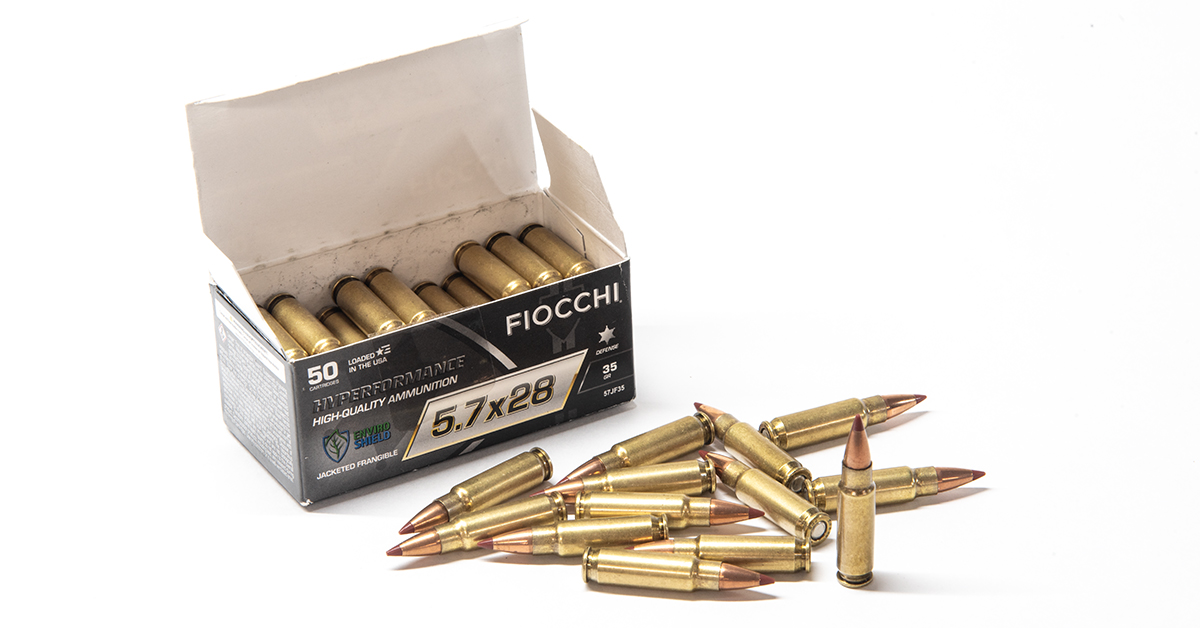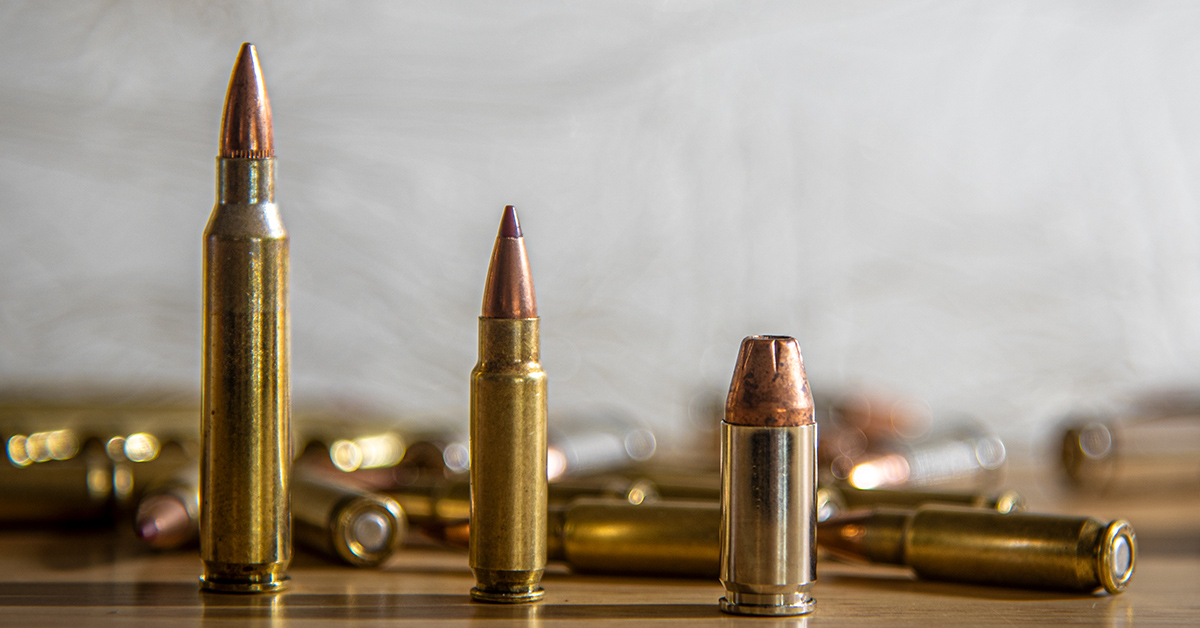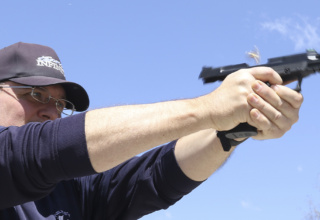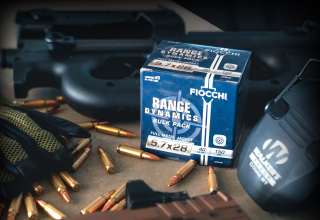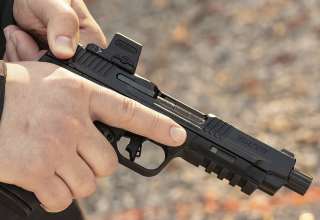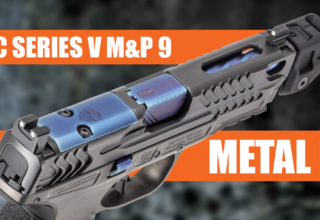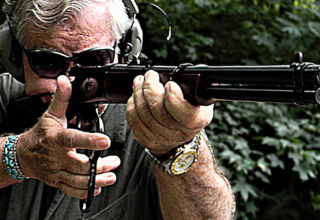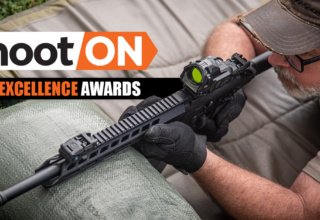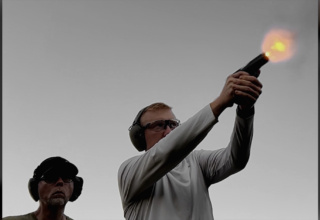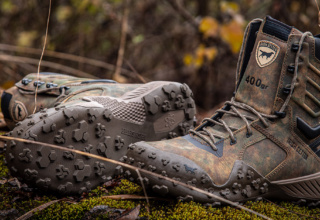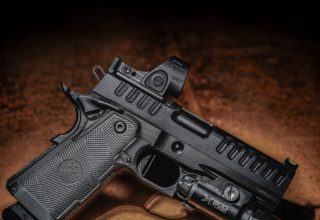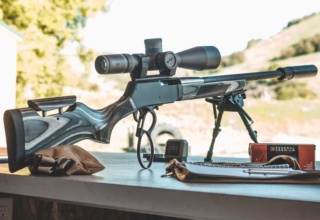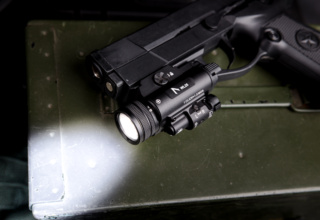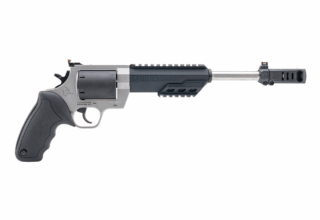We like the idea of ammo compatibility between our handguns and long guns for personal defense. So, how does the mighty-mite 5.7x28mm fare?
by Bob Campbell
Home defenders recognize the need for a powerful and reliable firearm that offers good hit probability and wound ballistics. There is a tremendous amount of information and misinformation as well to consider. As an example, although we know it isn’t true, some regard the .223 rifle as over penetrative for home defense use.
When Ruger introduced the Mini 14, Colonel Jeff Cooper shot up a derelict house and found the .223 less offensive than pistol cartridges in terms of penetration. I agree. Further testing has expanded the Colonel’s inquiries. The armies of the world have largely labeled the 9mm SMG obsolete and shifted toward the .223 carbine, finding it to be a go-anywhere, do-anything platform.
Just the same, the 9mm carbine is popular for many reasons. I think that economy and range limitations are among these. The only course of study valid is to compare ballistics via research and then do testing in actual damage assessment.
A relative newcomer is the 5.7x28mm cartridge. Originally intended for use in a lightweight, fully automatic PDW, the 5.7 accomplishes light armor penetration well with the restricted military loading. I feel that at short range, a burst of 5.7 would do exactly what it was designed to do. In home defense, with a one shot per trigger pull firearm, we have a different dynamic. We don’t need armor penetration; we need an expanding or fragmenting bullet.
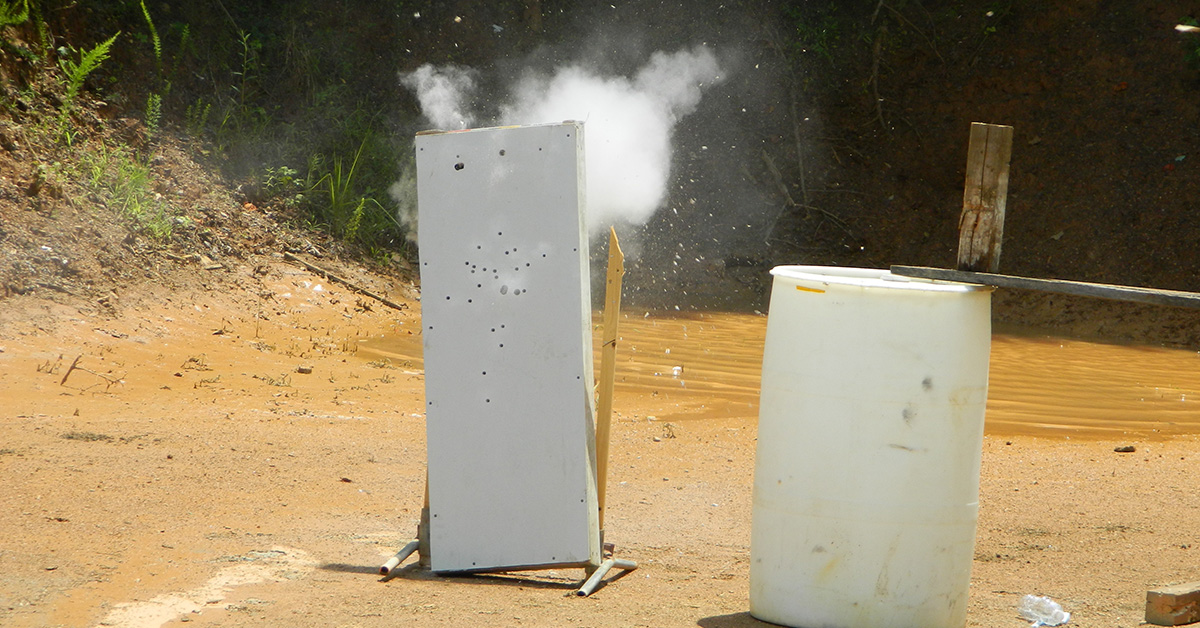
In a recent examination of the 9mm and .223, I included testing of the 5.7x28mm as well out of curiosity and reader interest. Since it is apparently important for many shooters to have a pistol and a carbine in the same caliber, I undertook testing in both pistols and carbines in 9mm and 5.7x28mm calibers. I also added the .223 Remington carbine. The results were interesting. Raw ballistics is one thing; the shooting itself was subjective.
Let’s look at some of the test procedures.
Finding test firearms wasn’t challenging. Since the cartridges were being put to the test, the firearms were only projectile launchers. The pistols used included a SIG P210 and Shadow Systems MR920 9mm. The 9mm carbines included a Smith & Wesson FPC and KelTec Sub 2000. The 5.7x28mm firearms included the Smith & Wesson M&P 5.7 pistol and a Ruger LC carbine. For the .223, I used a SIG M400.
Because the main thrust became testing the combinations as a belt gun and carbine alternative, the .223 pistol wasn’t tested. It isn’t a concealed carry handgun chambering and, frankly, isn’t something seriously considered by most professional shooters. The lead on this test once had an abstract on patrol carbines published on the Federal level and found the .223 pistol a poor choice compared to the carbine.
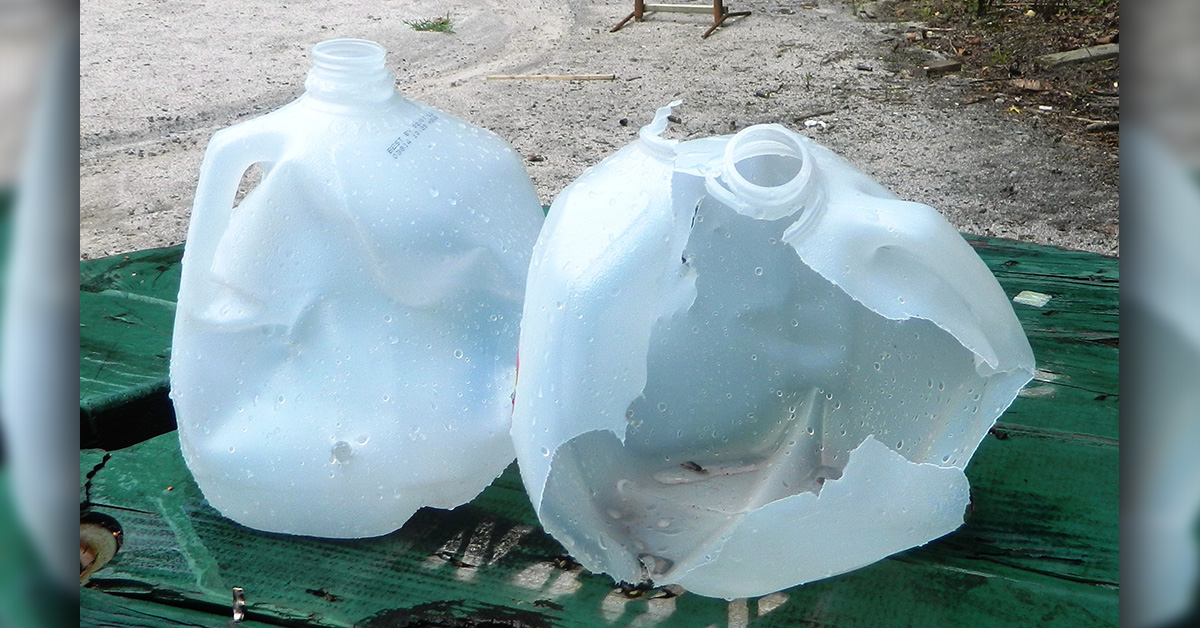
All the firearms included had proven themselves to be reliable. There were no failures to feed, chamber, fire, or eject during the program in any of the three calibers.
We didn’t use target and training ammunition as there was no point in it. We wanted to discover the stats on wound ballistics. One brand, Fiocchi, was used for stability. Fiocchi offers reliable ammunition that has proven to be match-grade accurate in numerous tests. The loads used were intended for personal defense.
It is important to present a definition of the process. We did not consider anything other than perfect reliability to be acceptable, and this is what we obtained. So, there is no need for discussion or a table listing malfunctions. Next was accuracy. While perhaps the least important of our criteria, we figure the carbine is useful for area defense, so we fired the pistols at 25 yards and the carbines at 25 and 50 yards.
The testing went smoothly — first for accuracy. The results that follow are the average of two 5-shot groups shot at 25 yards from the bench with the handguns, plus 25 and 50 yards with the carbines. I used the MTM Case-Gard’s K-Zone shooting rest for stability.
Accuracy Test
Fiocchi 5.7x28mm
- S&W M&P 5.7 w/Fiocchi 40-gr.: 2.0 in. (25 yards)
- S&W M&P 5.7 w/Fiocchi 35-gr.: 2.2 in. (25 yards)
- Ruger LC w/Fiocchi 40-gr.: 0.8 in. (25 yards)
- Ruger LC w/Fiocchi 40-gr.: 2.2 in. (50 yards)
Fiocchi 9mm Luger
- SIG P210 w/Fiocchi 124-gr.: 1.75 in. (25 yards)
- Springfield Echelon w/Fiocchi 124-gr.: 2.6 in. (25 yards)
- S&W M&P FPC w/Fiocchi 124-gr.: 1.0 in. (25 yards)
- S&W M&P FPC w/Fiocchi 124-gr.: 2.4 in. (50 yards)
- Kel Tec Sub 2000 w/Fiocchi 124-gr.: 4.0 in. (50 yards)
(Note: The FPC features a red dot optic; the KelTec was fired with iron sights.)
Fiocchi .223 Remington
- SIG M400 w/Fiocchi 55-gr. JSP: 0.5 in. (25 yards)
- SIG M400 w/Fiocchi 55-gr. JSP: 0.6 in. (50 yards)
- SIG M400 w/Fiocchi 69-gr. SMK.: 0.4 in. (25 yards)
- SIG M400 w/Fiocchi 69-gr. SMK.: 0.5 in. (50 yards)
Ballistics/Wound Potential
Next, we did ballistic wound potential testing. Expansion and penetration were tested in six-inch-wide water jugs, making for easy comparison between loads. Then, we addressed the fear of overpenetration by firing into an artificial construct representing a home wall.
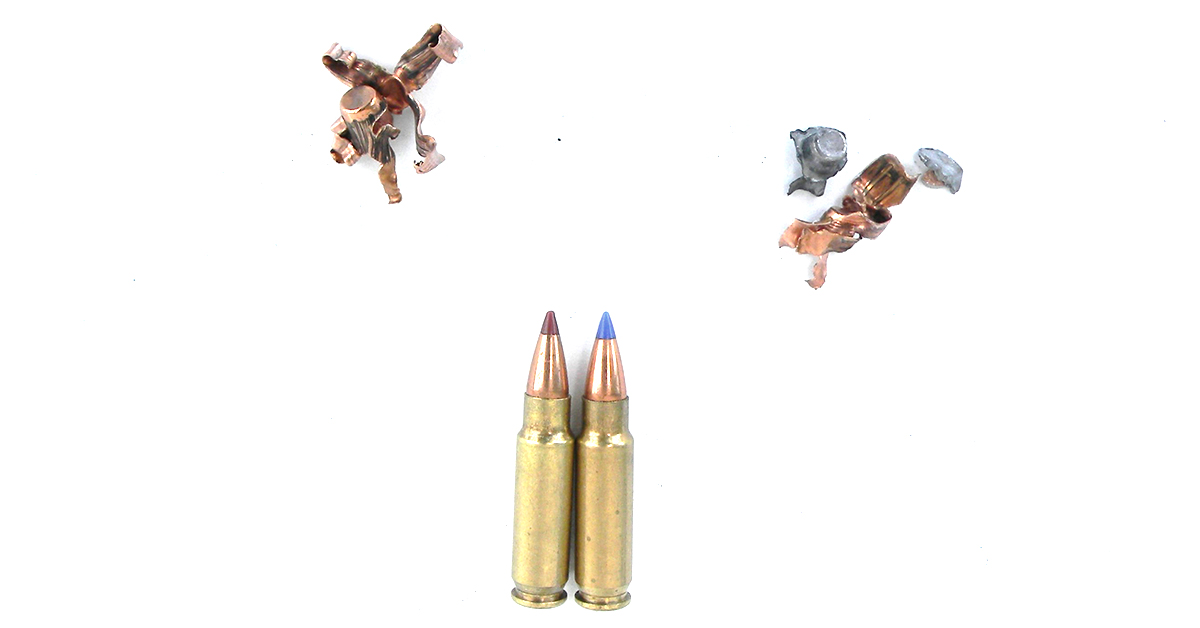
The primary concern in over penetrating your target is to hit the target. Don’t miss, and a well-designed expanding bullet is more likely to stay in the adversary’s body. A bullet sailing out a window after you have fired a poorly aimed round has your name on it.
Fiocchi 5.7x28mm
- S&W M&P 5.7 w/Fiocchi 35-gr.: 1835 fps, fragmented 8-11 in.
- S&W M&P 5.7 w/Fiocchi 40-gr.: 1840 fps, fragmented 9-12 in.
- Ruger LC w/Fiocchi 40-gr.: 2111 fps, fragmented 8-14 in.
Fiocchi 9mm Luger (115-gr.)
- SIG P365: 1160 fps; 16 in. penetration; 0.54 in. expansion
- S&W M&P FPC: 1389 fps, 18 in. penetration; 0.58 in. expansion
Fiocchi 9mm Luger (124-gr.)
- SIG P365: 1120 fps; 18 in. penetration; 0.50 in. expansion
- S&W M&P FPC: 1344 fps; 21 in. penetration; 0.54 in. expansion
Fiocchi .223 Remington (55-gr. JSP)
- SIG M400: 2890 fps; 9 in. penetration, fragmented
Fiocchi .223 Remington (69-gr. SMK)
- SIG M400: avg. vel. 2755 fps;14 in. penetration; 0.41 in. expansion
These tests were not surprising regarding the 9mm and the .223. My hardiest recommendation would be to adopt the 9mm pistol and .223 rifle. That’s what the Army uses, and the combination of ballistics, reliability, and ready availability is important.
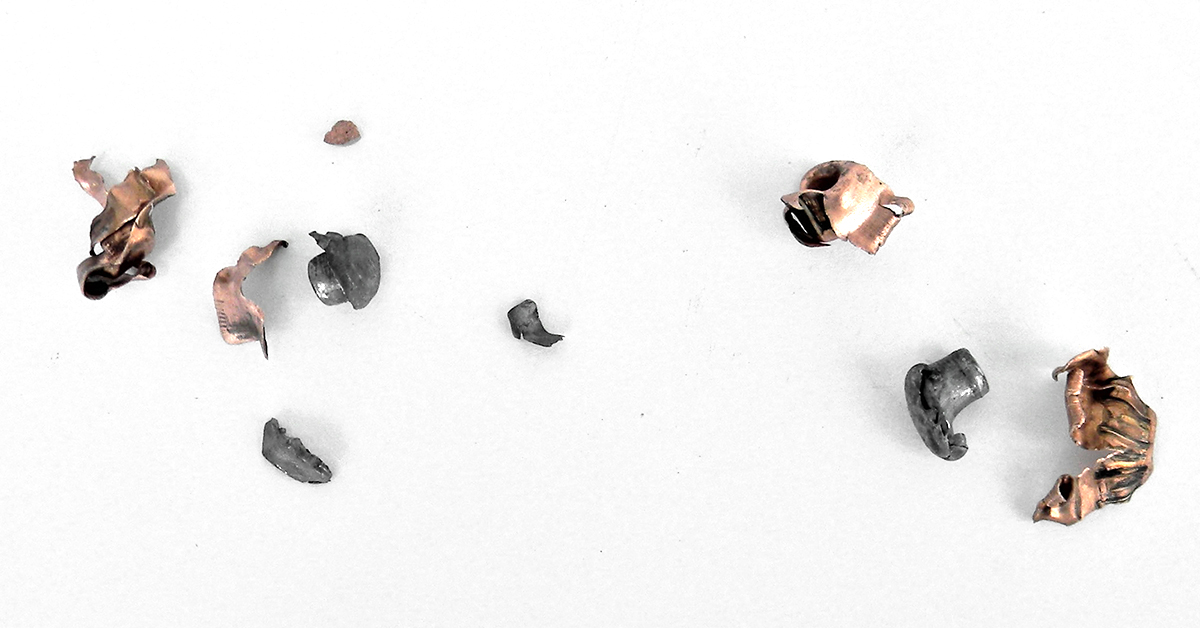
The 5.7 is a strong counterpoint. During the test, the 5.7 exhibited extreme energy release about six inches into its penetration of the water jugs. The 5.7 is also easy to shoot well, with modest recoil and muzzle report. Magazine capacity is 22 rounds with the Smith & Wesson M&P 5.7 pistol. Accuracy is excellent, and the combination of accuracy and control is simply superb.
The frangible loads have interesting wound ballistics. As a home defender, particularly for the recoil-shy and for anyone interested in delivering a frangible loading with great accuracy, the 5.7 has real potential — especially with affordable, effective ammunition readily available. If you are willing to think outside the box and use an open mind, you may find the 5.7x28mm the answer for many personal defense scenarios.

